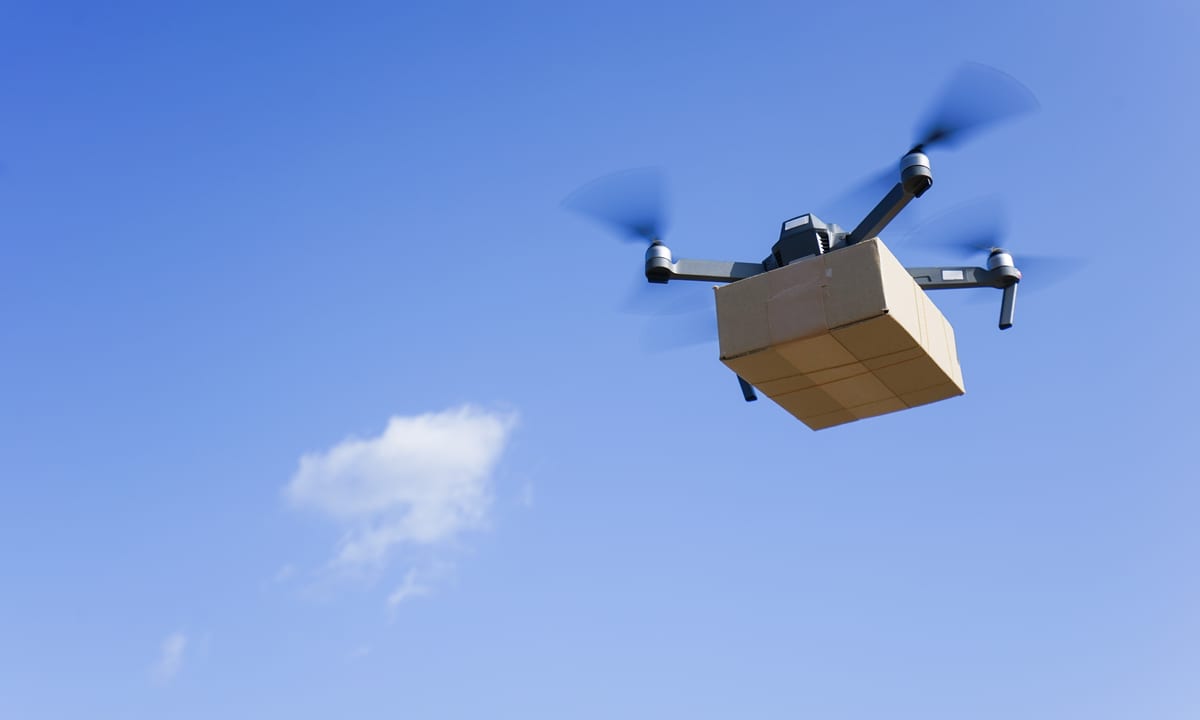Drone Delivery Gets A Lift With FAA Rule Change

The Federal Aviation Administration released two new rules for operating drones.
Calling it a major step toward fully integrating 1.7 million drones into the national airspace system, the Federal Aviation Administration has released two new rules it said will increase safety and innovation within the transportation industry’s fastest-growing segment.
The regulatory update comes as companies such as UPS, FedEx and Amazon continue to test and perfect their drone delivery fleets through a number of pilot programs, although it will still be a few years before most consumers receive a package from a hovering aircraft instead of a human.
According to the FAA notice, the first rule will require all drones and their control station to be equipped with a “Remote ID” system that will allow national security and law enforcement authorities to determine the location of both.
“Airspace awareness reduces the risk of drone interference with other aircraft and people and property on the ground,” the FAA said, noting that drone manufacturers will have 18 months to begin producing unmanned aircraft (UA’s) with Remote ID, and operators will have an additional year before they’re required to start using them.
The second rule regulates the use of drones over people, property, moving vehicles and at night, and requires operators to have a remote pilot certificate and ID in their possession whenever they’re flying.
“The new rules make way for the further integration of drones into our airspace by addressing safety and security concerns,” said FAA Administrator Steve Dickson. “They get us closer to the day when we will more routinely see drone operations such as the delivery of packages.”
Already Happening
While the FAA’s latest rule changes will help establish a framework for mass operation of drone fleets, the major delivery companies have been perfecting the practice alongside aviation authorities for more than a year.
Perhaps the best-known drone program currently underway is a UPS-CVS joint venture in Florida that began delivering medication in April to senior citizens living in The Villages, a massive retirement community of 135,000 people.
For its part, FedEx has been running a drone delivery trial with Alphabet-owned Wing Aviation in rural Christiansburg, Virginia since late 2019 and continues to solicit volunteers to this day who are willing to receive packages from a drone and discuss the experience.
In the meantime, Amazon has been testing drone fleet delivery around the world since 2013, and is currently looking to fill 70 other drone-linked positions at its Prime Air division in Seattle, which it says is “designed to safely get packages to customers in 30 minutes or less.”
The Sky’s The Limit
In addition to the 1.7 million drone registrations and 203,000 FAA-certificated remote pilots currently in the system, the FAA also oversees an additional 650,000 pilots and 14,000 air traffic controllers who oversee an estimated 42,000 daily flights.
All the while, private companies are working to develop safe systems that continue to push the limits of what is currently available, and in some cases, imaginable.
For example, in 2017 UPS began working on a system where its ubiquitous brown vans would have a roof-top drone system attached that would allow fully-automated drone deliveries in remote areas while a driver travels along their regular route.
Still, experts point out numerous legal obstacles and challenges that still exist before drone delivery at scale can take off. These include privacy or snooping concerns, flying at night, in bad weather or any other situation that limits or affects control when the drone is out of direct visual contact. There are also logistical realities like dense cities that would complicate things, especially for individual consumers.
While drone deliveries clearly won’t work for all situations, the companies and agencies most invested in the process are convinced that they can safely handle some portion of the process, faster and cheaper than they could do via traditional means.
